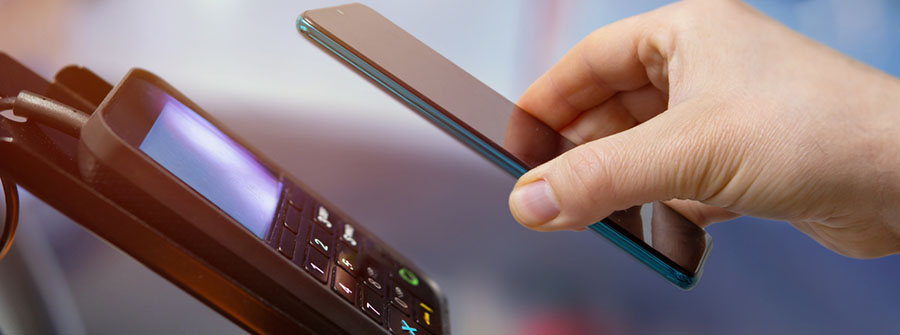Four Ways Technology Has Changed Traditional Payments

By Peter Charpentier, Senior Director of Product Marketing, Ingenico Group, North America
When we think about payments, experiences have changed significantly over the last 50 years. Technology advancements, the need for convenience, security and regulations have all played a part in causing significant shift in the way we pay for goods and services. Historically, only cash was used for most purchases. Checks became a viable option for bigger purchases as it allowed people to carry reduced amounts of cash. Next, came the plastic credit and debit cards where just one swipe changed everything and enabled our wallets to be smaller but our purchasing power to be bigger.
Another impact to payment methods has been incentives to the customer. Today merchants and credit card companies offer incentives to use a specific payment method. For example, some restaurants may offer a small discount if the customer pays in cash, or a credit card company might give you extra points if you use that payment method for travel or other promoted purchases.
Today, a typical customer has many options to pay when they shop. They can use cash, credit card or mobile wallets to pay. They can even scan a QR code with their smartphones to pay or use a peer-to-peer (P2P) application like Venmo.
However, amid all these technological advances, a typical payment process evolved into something bigger than itself – it became a key component in providing consumers a unique shopping experience. Whether they buy a car or even a small pack of gum, consumers always remember their overall experience. Whether the sales associate was helpful and polite or the customer thought paying with Apple Pay made them look cool, these experiences generally stick with customers. But payments didn’t just evolve overnight. There were many technological advancements that changed traditional payments forever:
1. EMV/Smart Cards
After the success of EMV in other developed countries such as Canada, France, Australia and others, it was brought in to the U.S. in 2015 to combat the rampant counterfeit fraud. While traditional magstripe cards stored unchanging data, the chip in the EMV cards created unique transaction codes every time the card was used. Additionally, these chip cards created a dialogue between them and the payment acceptance device to authenticate the transaction. According to Visa, chip technology has helped reduce counterfeit fraud in the U.S. by 76 percent.
2. Contactless/Mobile Wallets
Contactless payments added convenience and speed to the payment process. Customers across European countries and Canada, among other places, have been using contactless cards which allow them to simply tap their cards on the payment acceptance device to pay. While contactless cards are new to the U.S., mobile wallets such as Apple Pay and Google Pay also use contactless technology to enable customers to use their phones to tap and pay. They add another layer of payment security with biometrics authentication making it a safe way to pay.
3. Mobile Point of Sale (POS)
Mobile POS is redefining the payment landscape. It not only enables businesses to securely capture payments wherever the customers are but also create unique experiences that can go a long way in building trust and loyalty. What was initially seen as a solution for small to medium-sized businesses, slowly became an important consideration for the enterprise. Whether retailers are helping customers checkout in-aisle, or hotel staff is checking you in at the lobby instead of the front desk, mobile POS has gained popularity over the years.
4. Peer-to-peer (P2P) Applications
Many Peer to Peer (P2P) applications such as Venmo, Zelle, Apple Pay Cash, PayPal, etc. have risen to the occasion to provide consumers an easy way to transfer money. While one of the main uses of these applications is to transfer funds between peers, Venmo has started allowing merchants to accept payment from customers using the application. In other cases, P2P applications integrate with ride-sharing services such as Uber and Lyft to enable you to pay for them more easily. These integrations have helped businesses take advantage of this familiar payment method to enhance the customer experience.
Evolution of Customers and Technology
How we pay today is becoming invisible and technology providers will continue to look for ways to remove friction from this process. Payment technology has become faster, more secure and fun. Looking forward the technology innovations will continue to play a big role in the evolution of payment and how customers make purchases.
How has payment technology evolved in your business and how have you used it to enhance customer experience? Let us know in the comments.

Connect with Us
With business activities in 50 markets and 150+ currencies around the world, EVO is among the largest fully integrated merchant acquirers and payment processors in the world.
Related News

Finer Frames Streamlines Payments with EVO
Since 1999, Finer Frames in Eagle, Idaho, has provided innovative design, museum framing, restoration, art installation, and a range of…

4 Things A Field Services Business Should Look for in a Payment Processing Partner
Managing a field services business, such as a lawn care or plumbing business, is hard work. The last thing you…

Mobile Payments: Accepting Payments Their Way
The right devices and peripherals make all the difference. There is no doubt that customer expectations for quick and efficient…



